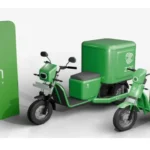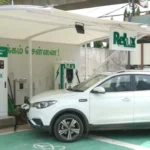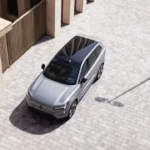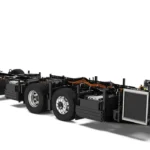April 11, 2025 – Owners of EVs in cold climates have long grappled with the issues in Li-Ion Batteries. Such as reduced charging speeds and diminished battery performance in winter. A revolutionary breakthrough in lithium-ion battery technology. It is set to transform the way EVs cope with freezing temperatures.
The Highlights of the New Li-Ion Batteries Technology
- Fast charging: In less than ten minutes, it charges to 80%. even when it’s freezing outside.
- Durability: Maintains more than 97% capacity after 100 fast charging cycles.
- Safety: Minimizes threats of lithium plating, including overheating and possible fires.
The Problem: Li-Ion Batteries EV Charging in Cold Weather
Lithium-ion battery chemical processes are significantly slowed down by cold temperatures. resulting in longer charging periods and an increased chance of lithium plating damage. This has been one of the biggest barriers to EV adoption in areas with brutal winters. When charging times can rise by up to 50% or more.
The Breakthrough Solution
Researchers at the University of Michigan have unveiled a revolutionary battery design. Enabling EVs to charge rapidly and safely even in cold temperatures as low as -10°C (14°F). The breakthrough focuses on a 20-nanometer-thick lithium borate-carbonate coating. Developed as a trade secret, which is applied to the anode of the battery. This coating suppresses lithium plating. Which normally takes place during fast charging in low-temperature environments.
Neil Dasgupta, Associate Professor and principal researcher at University of Michigan said. “This invention not only fixes a key challenge for electric cars. But does it in a fashion that can be incorporated into existing production lines. It’s a game-changer for EV penetration in cold climates.”
Industry and Market Implications on Li-Ion Batteries
The advance has generated optimism throughout the EV industry. Auto and battery manufacturers already are examining potential alliances to mass-produce the technology. It may strongly enhance public confidence in EVs. Especially in countries like Canada, Northern Europe, and parts of the U.S.. Where cold climates have been an adoption inhibitor. Industry experts believe that this technology has the potential. To drive world EV sales 15% higher in the next five years. It resolves two key consumer anxieties, recharging speed and cold-weather performance. Enabling EVs to compete directly with conventional internal combustion engine vehicles.
ELCTRIK Speaks
The Michigan University team is currently collaborating with industry players. To ramp up production and perform real-world testing. Automakers are positioning themselves to incorporate this technology in their next-generation EV offerings. This innovation represents a key milestone in the path. Towards making electric cars practical and accessible to every climate. It’s evident that the transport future is fast becoming electrified and now, weatherproof.







